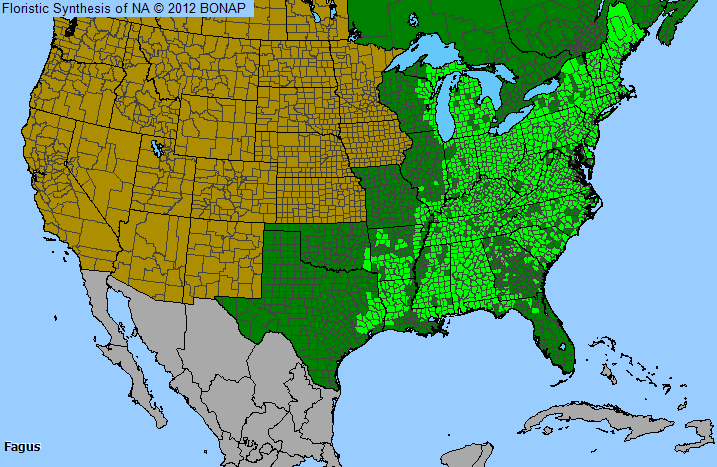
Plant Allergy Overview
Allergenicity
Mild
Pollen Season
Spring
Type
Tree
Sub-Type
Deciduous
Allergy Information
Beech trees are related to oaks, and as such, have allergenic pollen. Usually beech is not considered as allergenic. The European beech sheds much more pollen than the American species, but both have been reported to have minor allergenic importance.
Genus Details
Beech trees are tall, deciduous trees that reach 60 to 75 feet in height. Beech trees have veined elliptical leaves with teeth-like edges. These trees contain both male and female flowering parts, meaning they produce pollen, and can be pollinated either by themselves, or by other plants. American beech is the only native species of the genus in the U.S. The European beech is widely planted in the U.S. The edible nuts are found together in 2's or 3's, covered by a husk. The leaves and bark are poisonous. Flowering occurs during March to May depending on the latitude and elevation. The buoyant pollen is easily dispersed by wind.
Pollen Description
Pollen grains in this family are prolate subspheroidal or suboblate; the amb rounded, triangular, or trilobed and 3-colporate, 3-colporoidate, or 3-colpate. The colpi are long and narrow and the ora have thickened margins. The sexine is tectate and the intine is thin. Pollen grains of Fagus are distinct due to their large size.
They vary from 31-52 x 32-54 micrometers.
Genus Distribution

The shaded areas on the map indicates where the genus has been observed in the United States.
 - Native, observed in a county
- Native, observed in a county  - Introduced, observed in a county
- Introduced, observed in a county  - Rarely observed
- Rarely observedSpecies in Beech Genus
Allergens & Plants Search
Enter a full or partial species name to find more information on one of over 1,200 potentially allergenic plants.
For example, you can find chenopods searching on "cheno"

